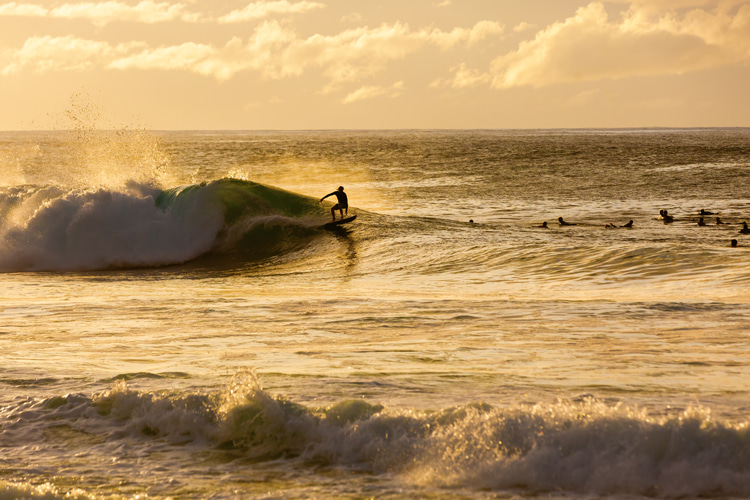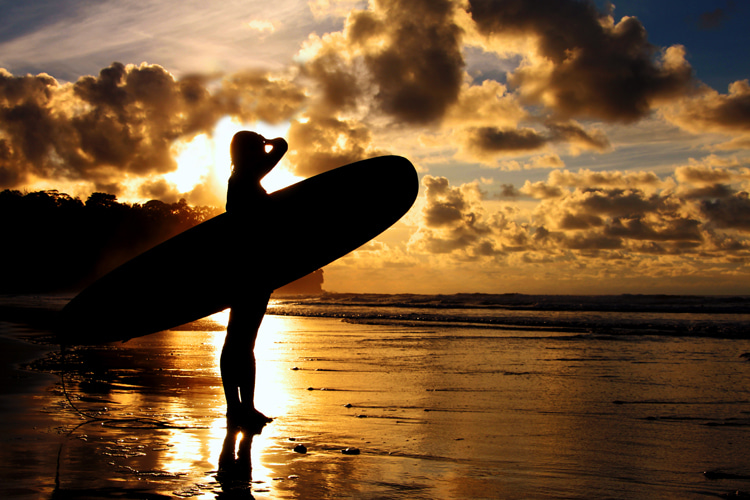When the golden hues of summer fade and the breezy whispers of autumn begin, a peculiar melancholy tends to grip many of us.
As we wave goodbye to vacations, late sunsets, surf sessions at dusk, and barbecues, the post-summer blues knock on our mental doors to a point where it gets really uncomfortable.
It seems our brain tends to focus exclusively on the fact that the long days start getting shorter, and the warm sunny days are on the countdown.
Depending on the intensity of the emotions, this depressive summer mood could be a specific form of seasonal affective disorder (SAD).
Generally speaking, SAD is a complex type of depression that occurs at a specific time of year, typically during the winter months, although a rarer form can occur during the summer.
It's more than just the "winter blues" or post-summer sadness, as it can seriously affect the quality of life.
Treatment is available, and those who believe they are experiencing SAD should consult a healthcare provider to determine the best approach to care.
SAD Symptoms
Seasonal affective disorder symptoms are somehow similar to those of major depression and may include:
- The feeling of hopelessness or sadness;
- Loss of interest or pleasure in activities;
- Changes in sleep and appetite (more sleep and increased appetite in winter; insomnia and loss of appetite in summer);
- Difficulty concentrating;
- Weight gain (winter) or weight loss (summer);
- Irritability;

Causes
The specific cause of SAD is still not fully understood by psychiatrists and psychologists, but several factors are believed to play a role:
- Reduced Sunlight: The decrease in sunlight during winter can disrupt the body's internal clock, leading to feelings of depression;
- Serotonin Levels: Reduced sunlight can also cause a drop in serotonin, a neurotransmitter that affects mood, potentially triggering depression;
- Melatonin Levels: The change in season can affect melatonin levels, influencing sleep patterns and mood;
Seasonal affective disorder is a treatable condition, and various approaches can be effective, including light therapy, medication, and psychotherapy.
Nevertheless, lifestyle changes that embrace exercise, a healthy diet, and spending time outdoors can mitigate symptoms.
Post-Summer Blues
As we've seen above, the post-summer blues could be a lighter version of SAD.
This mood dip isn't just a figment of our imagination. Humans are deeply influenced by the changing seasons.
Summer, with its ample sunlight, allows the brain to produce serotonin - the mood-boosting hormone.
As days shorten and summer wraps up, our serotonin levels can dwindle, leading to feelings of sadness or irritability.
If you're feeling a certain way but can't quite place it, these symptoms may help you identify if it's the post-summer depression:
- Decreased Energy: Feeling lethargic or fatigued more than usual:
- Irritability: Getting annoyed easily or being more temperamental;
- Social Withdrawal: Preferring to stay in rather than socialize or attend events;
- Changes in Sleep Patterns: Oversleeping or difficulty falling asleep;
- Pessimism: A general sense of hopelessness or seeing the glass as "half empty";
These symptoms typically surface as summer winds down, when the reality of returning to routines sets in and the anticipation of colder, shorter days looms.

Tips and Strategies for Overcoming Summer Bluesiness
Don't let the summer blues hit you hard.
Here are a few tips, suggestions, and strategies to deal with and beat the warm season sadness and help you stop thinking about summer ending.
Nutrition and Physical Exercise
Eat seasonally and stay hydrated.
Embrace autumn's bounty like pumpkins, apples, and root vegetables. These not only taste delicious but also provide essential nutrients.
Drink enough water to keep your energy levels up. Limit sugar and caffeine, as these can lead to mood swings.
Make sure you stay active. Physical activity like surfing releases endorphins, natural mood lifters.
So, embrace outdoor activities and try autumn-specific activities like hiking amidst fall foliage or apple picking.
Socialization and Mindfulness/Meditation
Plan ahead and schedule get-togethers or events to have something to look forward to.
Join clubs or groups and engage in activities that interest you, from book clubs to dance classes.
Practice gratitude by reflecting daily on what you're grateful for. This can shift your focus from what you've lost (summer) to what you have.
Finally, try meditation. It's easier than you think. Even a few minutes a day can help center your thoughts and reduce anxiety.
Carry Over the Joy of Summer into Fall
Keep the spirit of summer alive by transferring joyous activities into the cooler months.
Continue outdoor activities and enjoy the perks of summer even as the season changes.
Planning and Perspective
Plan something exciting for the future to shift focus from what's ending to what's beginning.
Use the season's end as a time to regroup and refocus on postponed goals.
Personal Growth and Focus
Treat the transition into fall as a new school year.
Embrace new challenges and focus on one priority to create a significant impact.
Reflection, Connection, and Fun
Reflect on past accomplishments, find an accountability partner for encouragement, and ensure fun is a year-round pursuit.
